Welcome to Everest 2024. The season begins soon and I’ve already posted several Everest 2024 big-picture updates for this season:
- Everest 2024: Welcome to Everest 2024 Coverage – an introduction to the Everest 2024 Spring season.
- How Much Does it Cost to Climb Everest: 2024 Edition – My annual review of what it costs to climb Everest, solo, unsupported and guided.
- Everest by the Numbers: 2024 Edition – A deep dive into Everest statistics as compiled by the Himalayan Database
- Comparing the Routes of Everest: 2024 Edition – A detailed look at Everest’s routes, commercial, standard and non-standard.
This post takes a look at the cost to climb the Big E from the Nepal and Tibet sides.
2024 will be my 22nd season of all things Everest: 16 times providing coverage, another four seasons of actually climbing on Everest, and two years attempting Lhotse.
I summited Everest on May 21, 2011, and have climbed it three other times (all from Nepal) – 2002, 2003, and 2008, each time reaching just below the Balcony around 27,500′ (8400 meters) before health, weather or my judgment caused me to turn back. I attempted Lhotse in 2015 and 2016. When not climbing, I cover the Everest season from my home in Colorado as I did in 2004, 2005, 2006, 2007, 2009, 2010, 2012, 2013, 2014, 2015, 2016, 2017, 2018, 2019, 2021, 2022, 2023 and now the 2024 season.
2024 is my ninth year to blog: “How much does it cost to climb Mount Everest?“
So, what does it cost to climb Mount Everest? As I’ve said for years, the short answer is a car, but the prices have skyrocketed, so now it’s a lovely car. Most people pay between $40,000 and $60,000, and some will pay as much as $160,000! But the prices are rising, and I don’t know where it will stop. Over the past ten years, companies with Western guides on the Nepal side have increased their average prices from $64,000 to $71,500 today, while Nepali guides have gone from $35,000 to $45,000 but heavily discounted by up to 25%. On the Tibet side, prices have exploded from $32,750 to $75,000. So, if you are on a tight climbing budget, go as soon as your skills, experience, and checkbook can support a safe attempt.
Here we go with a long and detailed look at Everest 2024. Please let me know if you see a mistake or want to add something.
Follow the 2024 Everest Coverage!
Preparing for Everest is More than Training
If you dream of climbing mountains but are not sure how to start or reach your next level, from a Colorado 14er to Rainier, Everest, or even K2, we can help. Summit Coach is a consulting service that helps aspiring climbers throughout the world achieve their goals through a personalized set of consulting services based on Alan Arnette’s 30 years of high-altitude mountain experience and 30 years as a business executive. Please see our prices and services on the Summit Coach website.
There is a lot of detail here, broken down by:
- Big Changes
- Big Picture
- Everest 2024 Outlook
- Everest 2023 Review
- Where Does My Money Go?
- Travel
- Permits and Insurance
- Supplies and Gear
- Logistics (Guide Services)
- Expedition Price Chart
- Reader Survey
- Guide Options
- Q&A
- Why Everest?
- Everest Pictures and Video
Big Changes
The traditionalist will pine for the good old days when climbers ascended daring new routes with no support, no supplemental oxygen and didn’t brag about their feat until they returned home, no selfies from the summit for them!
Well, those days are long gone except for a handful of people across the globe. Today, people fill Everest’s slopes who never imagined they could get the opportunity. Style be damned. An entirely new generation celebrates the joy and satisfaction of what they accomplish. They don’t give the traditionalist any notice, only occasionally acknowledging that what the pioneers did in their day was truly special.
Climbing Mt. Everest has dramatically changed over the past several years. Today, Nepali companies dominate running commercial expeditions, hiring hundreds of Sherpas (and other ethnicities) to support a wide variety of customers. The traditional operators from America, Argentina, Austria, Germany, New Zealand, the U.K., etc., are still doing well. However, their teams are staying significantly smaller, having ten or twenty customers compared to 50, 60 or even 100 with the Nepali outfits.
The climbing model has completely changed. Decades ago, team climbers would contribute equally to carry gear and establish high camps. Supplemental oxygen was rare and ran at a relatively low flow of two liters per minute compared to today’s of four, even six and sometimes up to eight lpm. Also, today’s delivery systems are much more efficient.
The level of support has changed. From 1990 to 2000, the ratio of support (Sherpas) to clients was 1:0.79. From 2000 to 2013, it increased to 1:1.09; from 2015 to 2023, it leaped to 1:1.31. In 2022, it was a staggering 1:1.62, with 415 Sherpas summiting with 256 clients on the Nepal side. Today, more Sherpas and Tibetans have summited Everest than paying clients, 5,721 vs. 5,620.
I think it’s great to see Sherpas climbing for the joy and recognition of it, but we need to keep the criticism of the wealthy foreign lawyer paying to get dragged to the summit in check, given who is really climbing the peak today.
The demographic of those who are climbing has changed. While Americans, Britons, and Germans still flock to Everest, more Indians and Chinese are climbing the slopes. The Nepali companies have done an excellent job catering to this growing customer base.
The age of the average climber is growing. In 2008, the age group between 20 and 29 dominated those who summited at 29%. By 2023, that group shrank to 12%, and the 40 to 49 group swelled to 30%. By the way, the 50 to 59 ‘old-timers’ went from 7% to 18% in that same timeframe! Also, female climbers have grown dramatically, with 14% of the 2008 summiteers being female to 23% in 2023. The average in 2023 was 42 years old–43 for men and 39 for women.
Finally, fundamental problems remain unaddressed and ignoring Leave No Trace principles leads the list. Like on Aconcagua and Denali, Nepal must mandate using WAG bags to remove ALL solid waste from anywhere on the mountain. If the government doesn’t step up, all the operators must enforce this simple, inexpensive method of not adding to the waste problem, especially at Camp 2 and the South Col. This also applies to the Tibet side. Other issues range from fair wages for all workers, excessive use of helicopters, removal of old ropes, and more. They are well known, and it’s up to the major operators to lead the way.
So, things have changed. Some call it progress as more people than ever enjoy the sport; others call it a disaster that is ruining the sport and the mountain. No matter your side, it will never go back to what it was, so let’s examine how much it costs to climb Everest in 2024.
Big Picture – Nepal-Flat, Tibet-Soars!
The headline for 2024 is that prices continue to increase from all operators on both sides, but the price range, from lowest to highest, is the largest since I started this tracking ten years ago. The increases are because of inflation, labor wage increases, Sherpas with IFMGA certification receiving higher pay, more Nepalese regulations around minimum salaries and insurance, and a strong supply and demand environment from clients. As I have previously mentioned, there is an insatiable demand to climb the world’s highest mountain.
So, do you have to be rich to climb Everest in 2024? The Nepali operators have always been willing to deal, so take their list prices as an opening bid. With Nepal’s strong tourism business and high demand, Nepali companies will still deal but not as aggressively as in the prior years. You can get on a low-end, essential services-only trip for $30,000. As for dealing with foreign operators, don’t bet on a significant discount. It’s customary to offer a little off if you pay a year in advance, but that’s about it. They fill their teams months in advance, so there’s little incentive to discount.
The following chart breaks down the current MEDIAN prices (midpoint for prices with half above and half below this price) by style and route. I use the 2019 Tibet side prices since that was the last pre-pandemic year of climbing. I’ll go into more detail later in this post; however, you can quickly see how much the prices have increased on both sides for all styles. There are real costs the foreign operators have operating in Nepal that the locals don’t have, thus the major difference in the prices, but I’ll go into that later:
| Nepal 2023 | Nepal 2024 | % Change | Tibet 2019 | Tibet 2024 | % Change | |
| Nepali Guide Service | $45,000 | $45,000 | 0% | $35,000 | $47,000 | +25.5%% |
| Foreign Guide Service with Sherpa Guide | $51,750 | $53,725 | +3.7% | |||
| Foreign Guide Service with Western Guide | $70,000 | $71,500 | +1.5% | $71,500 | $75,000 | +16.7% |
As for safety, people die on both sides. Most of the deaths these days are because of inexperience and not having a guide who “manages” your climb. However, choosing a competent guide could save your life.
Everest 2024 Outlook
I expect 2024 to be a big year for Everest-Nepal and the re-opening of the Tibet side to foreigners.
I suspect 2024 will be another busy year. First, there is the insatiable lure of Everest, and, as is the standard since 2013, droves of inexperienced climbers drawn by “no-experienced required” low-cost operators. However, 2024 will be different, with the north side open to foreigners and the last year before Nepal raises permit pricing by 36% from $11,000 to $15,000.
I expect 800 total summits from both sides this spring. Look for at least 150 Tibet-side total (members plus hired) summits and well over 650 on the Nepal side. With these numbers, they will still lag the pre-pandemic record set in 2019 of 877 total summits, comprising 661 from Nepal and 216 from Tibet. Last year, 2023, saw 655 total summits from Nepal and thirteen on Tibet. Let’s break all of this down and what our climbers can expect.
Who’s Climbing and New Rules?
In keeping with the pre-pandemic years, look for more climbers from China and India than ever. As I’ve detailed in the past, China requires all Chinese Nationals to climb an 8000-meter peak before climbing Everest from China; thus, many go to Nepal, where there are no experience requirements. As for the Indian climbers, it’s folklore that if you summit Everest, you can leverage that into fame and fortune – a considerable miscalculation by many. But many Nepali/Indian guide companies meet this market demand, plus create profitable businesses running training programs for the under-20 crowd and then take them to Everest. Unfortunately, this approach is a deadly gamble that may backfire one day.
Nepal announced only one silly new rule – that all operators must remove the body of the client who dies on the climb. There are no new rules to prevent deaths in the first place, only to remove the body.
Everest 2023 Review
The 2023 Everest spring season ended with some records to take pride in and others to be avoided. If there were one word to summarize the season, it would be chaotic or perhaps deadly. This spring was the deadliest season in Everest’s history. It was also brutally cold.
There were around 667 summits on the Nepal side and 16 from Tibet, which was still closed to foreigners. There was an all-time Everest high of 18 deaths – 6 Sherpas and 12 clients. In my estimation, 11 deaths were preventable.
Nepal issued a record 478 climbing permits to foreigners. Add in one and a half Sherpa supporting each foreigner; over 1,200 people pursued the summit this spring. Fears were rampant of a 2019 repeat with long lines and deaths. The lines never developed, thanks in part to colder weather that sent a higher number of climbers home in mid-season, many with a persistent virus. However, the deaths developed, but not because of the record permits or climate change.
About 667 reached the summit, with more Sherpas, 378, summiting than clients, 277, according to the Himalayan Database. Only 55% of the members who went above Base Camp, 483, summited, 277.
What stole the headlines were the daily reports of rescues, frostbite, missing climbers, and deaths. The root cause of the chaos is still elusive. Some blame the record permit numbers, inexperienced clients, and low-cost operators. However, Nepal government officials cited climate change. Blaming climate change is a red herring to abdicate responsibility by operators and authorities.
Where Does My Money Go?
There are four major components to any Everest climb, regardless of whether you are climbing from Nepal or Tibet: travel, permits/insurance, supplies/gear, and guides. For 2024, there will be no significant changes to this cost structure. The following discussion breaks down the expenses as if an individual wanted to climb without joining a team, but almost no one does this, as the numbers will show – it is just too expensive or risky.
I know a few individuals climbed on the cheap in years past, but few in the last five years. I usually get a reply to this article saying, “Alan, you’re crazy. I climbed Everest and only spent $5,000.” Congratulations if that’s true, but chances are it was in the last century, was illegal (no permit), or on the North before China raised their prices and put in team size minimums. If someone can tell me how to climb that inexpensively in 2023, contact me with the details.
1. Travel $500 – $10,125
The travel costs entirely depend on where you live and how you like to travel. It can range from a few hundred dollars to over $7,000 to fly to Nepal from the United States in Business Class. Most people use Thai, Turkish, Qatar, Air India, or China Eastern to reach Nepal.
Once in Kathmandu, it would be best if you flew to Lukla, Namche, or Lhasa to start the journey to base camp, so add a few hundred dollars for this airfare. But, of course, you can take a bus to Jiri and trek five days to Luka and then on to EBC to save a little money.
From Lukla, it takes a little over a week to trek to base camp, acclimatizing along the way, so add food and lodging along the way for you and your support team. The trek costs can range between $400 to $1,000 per person. But, depending on your travel style and how many beers you buy, you can save money. Remember that everything becomes more expensive the closer you get to Base Camp, so buy batteries, toilet paper, etc., in Kathmandu, Lukla, Namche, or, better, at home.
Teahouses have dramatically increased their prices in Khumbu. You can still find the $7 per night teahouse, but expect to pay $5-10 for each meal. Climbers can always camp in tents and cook their meals to save money, but if you camp and eat in the teahouse, expect to pay four times the price if you don’t sleep in the teahouse; they make their profit from selling meals.
You must get yourself and all your gear – tents, food, oxygen, etc., to base camp. Most people use porters and yaks, costing at least $20 per day per load but usually higher, which usually totals over a thousand dollars. Large operators will hire helicopters and bundle the expense with the overall price. On the Tibet side, your climbing permit includes all transportation–a 4WD driven by an employee of the China Mountaineering Association (CMA). In addition, the CMA will meet you where you arrive in China and never leave you during the entire expedition except when you climb above base camp.
Travel $2,525 – $8,425
- Airfare is $1500 to $7000 depending on class and routing, and excess baggage
- Transportation from Kathmandu to Lukla is $400 round trip per person
- Hotel and food in Kathmandu are $300 to $700 depending on delays and quality level
- Nepal Visa $125 (90 days)
- Immunizations $200
Getting to EBC $1,240 – $1,800
- Yaks to and from Base Camp $40 per yak per day carrying 120 lbs (4 yaks for four days minimum or $640)
- Extra Yak in China is $300/Yak
- Porters to and from Base Camp: $20 per porter per day carrying 60 lbs (3 porters for six days minimum or $360)
- Tea Houses and food on the trek to EBC $20 – $100/person/day – 7 days $140 – $700
- Park Fee $100/team
2. Permits and Insurance $9,950 – $29,500
Nepal
Nepal has a $11,000 permit fee per individual, which will increase to $15,000 in 2025. It simply allows a climber to climb. In Argentina for Aconcagua or Alaska for Denali, the $800 or $365 permit helps fund high-altitude ranger camps, hire seasonal staff, provide mountaineering information, and keep the mountain environment clean. When you climb on Denali, the permit includes helicopter evacuation for life or limb emergencies but not for low-level sickness.
Nepal requires a local company to organize your permit at $2,500 for the team, a refundable trash deposit of $4,000 per permit, and a Liaison Officer costing $3,000 per team. These total $9,500 BEFORE the $11,000 per person climbing permit. So before you hire guides, yaks, food, or gear, you must come up with almost $20,000 in Nepal.
In 2013, Nepal implemented a new rule that requires every foreign climber to hire a local Sherpa Guide. It is still there for the 2024 season, but this policy is unevenly enforced, if at all. While it is very unclear how or if this rule is enforced for every operator, it would add a minimum of $5,000 to the absolute lowest cost. In 2017, one person who climbed without a permit was caught, deported, and banned from climbing in Nepal for five years by the Nepal authorities. Both sides are cracking down on unauthorized climbing, so beware.
Most guide companies on the Nepal side will require at least evacuation insurance, and most require medical coverage. One of the best investments you can make is to add trip cancellation to the policy, but it’s expensive. In both 2014 and 2015, when the Everest season ended early, those with trip cancellation/interruption coverage had 100% of their trip expenses reimbursed, some as high as $45,000.
Several companies provide coverage for medical evacuations from the injury point to a local or home medical facility. Some cover trip cancellations and others offer medical insurance. These policies have become very expensive in 2024, so shop around. Many operators have discounts arranged with these companies if you reach their website through your guide’s website or call them. Travelex, Global Rescue, Redpoint Ripcord Rescue Travel Protection, AIG Travel Guard, and International Medical Group’s TravelLX are all good.
To save money, joining the American Alpine Club will provide $7,500 in evacuation coverage to a local hospital and $300,000 to get you back home. These are bargains at $65/year and $250/year, respectively. Most people upgrade that basic coverage for a few hundred dollars. Global Rescue and Redpoint’s Ripcord Rescue Travel Protection program are other popular evacuation companies but have become very expensive.
With all these policies, to be covered, you must follow their rules strictly, and I mean precisely. One misstep and the policy will not cover your expenses. Again, exactly. Also, most do not cover searches if you get lost, and those who offer coverage have low limits.
Tibet
The Chinese increased climbing permits for Everest in 2019, eliminating a low-cost, single-person climb from Tibet for under $20,000. This change forces climbers to team up with at least three other members. This three-person requirement is not a big deal for independent climbers since many guides are glad to have you on their permit for a small fee and not provide any support.
An Everest climbing permit from the Chinese (Northside) is now between $15,800 and 18,000 per person for a team permit of 4 or more. This price includes transportation from the entry point in China (usually Lhasa or Zhangmu–Kodari) to base camp, hotels, liaison officer, trash fee, five yaks in, and four yaks out per member. In addition, there is an extra charge of $200 per day per person for time spent in Lhasa. If you want to bring a Nepali Sherpa to climb with you in Tibet, budget an additional $4,500 for each Sherpa’s “work permit,” as required by the CTMA, plus a salary of $5,000.
The Tibet side is more complicated for evacuation insurance since a centralized team performs all on-mountain rescues. The rescued climber is on the hook for an unspecified and unlimited fee. Helicopters are not allowed but are rumored to begin in the next few years, maybe by 2026. It would be wise to double-check everything with your provider and evacuation coverage company to understand the details when climbing in China.
Climbing Fees $20,600 – $25,650 (Nepal)
- The Nepal Agency fee is $2,500 per team (usually included in the total price from a guide)
- Nepalese Liaison Officer $3,000/team (usually included in the total price from a guide)
- South Base Camp Medical support from EverestER $100/person
- Nepal permits $11,000 for each climber, regardless of team size
- Chinese permit is between $15,800 and 18,000 per person for teams of 4 or more. $4,500 for each Nepali Sherpa
- Nepal garbage and human waste deposit $4,000/team permit (refundable but not always)
- Tibet garbage and human waste deposit $4,000/team permit (refundable but not always)
- Icefall Doctors to fix route $2,500/team or $600 per climber
- Contribution to fixed ropes above Icefall $200/climber, higher on the Tibet side
- Weather forecast $0 to $1,000
- Puja $300
Insurance $70 – $3,000
- Evacuation Insurance $70 (American Alpine Club) – ~$500 (Global Rescue/Travelex)
- Medical only $500
- Rescue Insurance for any reason with medical insurance and trip cancellation coverage – $3,000 to $15,000 (Travelex)
- Private pay helicopter evacuation from Everest South – $5,000 – $20,000 depending on start and end locations (not available in Tibet)
- All insurance figures are representative and will vary widely with age, length of trip, and total cost.
3. Supplies/Gear $ 5,000 – $30,000
You will need to eat and stay warm, and 97% of all Everest summiteers use supplemental oxygen. You can cook your food, but most people use a cook and helpers, costing $5,000 for base camp and budgeting about $800 per person for food and fuel while climbing Everest over six weeks.
Supplemental oxygen runs about $600 per bottle with a minimum of 5 bottles totaling $3,000. But you will also need a mask at $500 and a regulator at $500. You can carry your extra oxygen to the high camps, but most people use the Sherpas to cache them at the high camps. When hiring a personal Sherpa, the standard is for him to climb on oxygen, albeit at a lower flow rate, so this will run between an additional $4,000 to $10,000.
Finally, you will need climbing gear, including boots, a down suit, clothing layers, gloves, sleeping bags, packs, and more. These items will cost at least $9,000 if you buy everything new. High altitude boots from La Sportiva or Millet run $1,200, a full down suit from Feathered Friends or Mountain Hardwear is over $1,200, and a sleeping bag rated to -20F is at least $800.
You can often find lightly used climbing gear on eBay or less expensive gear in Kathmandu. I recommend buying boots at home so you can get the correct size. Remember that your feet will swell by at least a full size at high altitudes, so buy your boots and try them on at home with your climbing socks to test the fit before leaving for the climb.
Misc $14,450 – $23,000
- Full Medical kit $1,000 – $1,500 – add $2,800 for Gamow Bag
- Sherpas, cooks tips and a bonus of $450 – $4,000++ per individual depending on performance and summit
- Personal Gear (down suit, high altitude boots, sleeping bags, etc.): $9,000
- Satellite phone (own) $1,000 to $3,000 depending on usage
- Gear allowance for Sherpas $3,000
EBC and High Camps $3,800 – $8,800
- Tents $3,000 new (sleeping, cooking, toilet, storage at four camps for three people)
- Cooks $5,000 per cook and assistant for six weeks
- Food and fuel are $800 per person for six weeks
Climbing Support $4,000 – 15,000
- Oxygen $600/bottle (5 bottles) $3,000 (doesn’t include costs to take to high camps)
- Oxygen Mask (Summit Oxygen) $500
- Oxygen Regulator $500
- Climbing Sherpa $5,000 – $9,000 per Personal Sherpa with oxygen at $3,000
Preparing for Everest is More than Training
If you dream of climbing mountains but are not sure how to start or reach your next level, from a Colorado 14er to Rainier, Everest, or even K2, we can help. Summit Coach is a consulting service that helps aspiring climbers throughout the world achieve their goals through a personalized set of consulting services based on Alan Arnette’s 30 years of high-altitude mountain experience and 30 years as a business executive. Please see our prices and services on the Summit Coach website.
4. Logistics (guide) $30,000 – $85,000
With all the previous costs broken out, it can be overwhelming. But don’t despair; you can join a fully supported or guided team that manages everything.
For decades, western operators like Adventure Consultants, Alpine Ascents (AAI), Jagged Globe, International Mountain Guides (IMG), and a new generation like Furtenbach, Madison Mountaineering and Climbing the Seven Summits have guided hundreds to the top of Everest for prices ranging from $49,000 to $115,000, all-inclusive.
But that is changing. There has been intense competition from Nepali-owned and operated companies in the last few years. With over 100 Sherpas having ten or more Everest summits, they advertise as Everest Guides and eliminate the traditional Western Guide, who earns between $15,000 and $25,000 for the season. This cost-saving is passed through to the clients. In 2024, lead Sherpas earn salaries similar to Western Guides, so the price gap is narrowing, but the Nepali companies are still less expensive, as we will discuss.
Some, not all, Nepali operators are well-known for underpaying their staff, thus charging half to a third of traditional Western operators for a Nepal Everest expedition. In 2024, some Nepali operators are reportedly offering their Everest expedition for as low as $30,000 per climber. One common trend is that almost all Nepali guides will privately negotiate and discount, while most foreign operators will not.
Many of the lead Sherpas now have a subset (no ski qualification, for example) of the IFMGA certification with more summits than many Western guides. This certification allows the Sherpas to earn up to $10,000 for the Everest season compared to $4-5,000 previously. This trend will drive up the cost of the Nepali companies over time as more and more Sherpas become certified. One Nepali operator charges an additional $10,000 if you want to climb with an IFMGA-certified Sherpa guide.
With all this background, I used public websites and my research to compile the 2024 Everest fees from the major Everest guide companies. Remember, there were virtually no climbers on Everest in China in 2021, 2022, and 2023.
This list is not comprehensive of all guides, and I did not look at small one-person operations or those who do not run climbs each year for more than one or two members. I’m not making endorsements by including or excluding a company from the list. It’s for reference only. Check with the operator for details and questions.
Almost all guides increased their prices, but non-Nepali operating with a Western Guide on the Tibet side increased their fee an average of 23% from 2019, the last full year of climbing that included foreign expeditions. New Chinese rules and increased permit fees primarily drove the cost increases. The Nepal side operators increased by between 1 and 4%. Without a doubt, climbing with a Nepali-owned company is half the price of a foreign operator with multiple Western guides. However, some foreign companies offer Sherpa lead trips that can be very price-competitive.
Prices usually include full logistics support, gear, food, Personal Sherpa, oxygen, mask, and regulator. You can see my thoughts on Everest guides on my main site at Selecting a Guide.
2024 Expedition Price Chart
Unlike most foreign operators, many Nepali companies no longer list their prices, claiming there are too many options and need to speak directly with the potential client.
Surveys
Who Guides on Everest?
There are no enforced requirements to call yourself a guide in Nepal. In fact, the Nepal Ministry of Tourism calls every Sherpa a ‘Sherpa Guide’ regardless of their training or experience. However, this is slowly changing as more Sherpas attend basic climbing and first aid courses at the Khumbu Climbing Center.
There are three options for supported climbs: Sherpa-supported, Sherpa-guided, and Fully-guided commercial expeditions. I have changed from using “Foreign Guide” to”Fully Guided” as several of the Nepali guides are doing an excellent job, so the term “fully” is more inclusive. All leverage groups cost, such as deposits, cooks, and tents across multiple climbers.
All teams on both sides use the same ladders and ropes installed by dedicated Sherpas, Tibetans or a joint effort by commercial teams. Some outfits will market that their price includes ladders and ropes, but it’s not a difference when everyone has access to it at the same prices.
In comparing prices, note that any non-Nepali company must buy an $11,000 climbing permit for each person on the team, and that includes guides. Nepali citizens pay $560 for a climbing permit, thus saving thousands of dollars for the overall expedition. Those savings are passed on to clients in order for Nepali operators to offer lower expedition prices.
One final thought: I think all these models can get the appropriately experienced client safely to the summit of Everest and back home; however, your experience and style may differ dramatically. I always suggest getting references from someone similar to you in climbing experience, age and budget. I regularly recommend these models to my Summit Coach clients.
Let’s look at them:
Sherpa Supported Expedition
Please note this is Sherpa-supported, not guided and what most Nepali-owned companies offer, even though they call each Sherpa “guide.”
For about $45,000, you can climb on a Sherpa-supported expedition. The cost is roughly the same as last year. The company organizes all the logistics: permits, food, group gear, transportation, plus Sherpa support but does not provide western guides. Sometimes, there will not be a lead Sherpa guide or a Personal Sherpa who will climb with you throughout the expedition, but only be with you for the summit push.
The Sherpas may or may not speak English well, and some will probably follow your lead to push forward or turn back. You are fully responsible for your safety and life.
You must be extremely careful when selecting among these companies as some are excellent and others lacking. A Sherpa will climb with you on summit night, but you might be on your own with random teammates throughout the rest of the acclimatization climbing process, including preparing meals at the high camps. It is common to find yourself climbing only with a Sherpa or by yourself. The Sherpas may have attended a climbing school, like the Khumbu Climbing Center (KCC). Still, they may lack suitable medical training and not be of significant help in a health crisis other than getting you lower, which is substantial and often life-saving.
Asian Trekking specializes in this style of climb and is outstanding. 8K Expeditions, Thamserku, Pioneer and Seven Summits Treks are good options at a lower cost. Many small one-person Nepali companies offer even lower prices. Look to pay between $35,000 and $45,000 for this option. This option is suitable for climbers with significant high-altitude experience, including other 8000-meter peaks like Cho Oyu or Manaslu. It is not for the novice or first-timer on an 8000-meter peak.
Sherpa Guided Expedition
Please note this is Sherpa-guided, not supported.
International Mountain Guide’s (IMG) Classic Everest climb is a Sherpa-guided expedition that has an experienced Sherpa lead climber throughout the route. IMG charges $49,500 for this model. Climbing The Seven Summits offers a similar program for $54,000. Nepali operators like 8K Peaks, Expedition Himalaya, Imagine Nepal, and Dreamers Destination are good local options. Usually, this model depends on a highly experienced senior Sherpa, or Sidar, to make big decisions, such as when to go for the summit or turn around. Also, there is often a Westerner or extremely experienced Sherpa overseeing the expedition in Base Camp, but not climbing.
An option is hiring a Personal Sherpa for an additional $5,000 to $10,000 plus 5% to 20% for tips and bonuses. These Sherpas have gained significant experience and training in dealing one-to-one with Western members. Their English skills are usually excellent but similar to a Sherpa-supported climb, they may lack formal medical training but have tremendous real-world experience, and you will never climb alone.
While they will not carry all your gear, they may offload some items from time to time. They will be with you exclusively on your summit night, even if you turn around before the summit. This style is appropriate for climbers with 7000-meter experience (e.g., Denali, Aconcagua) and strong climbing skills, but not for novices. I used this model with IMG and Kami Sherpa in 2011 for my summit and was very pleased.
Fully Guided
Please note this usually implies Western Guide leading the climb.
Fully guided expeditions are ‘full service’ trips and are most appropriate for climbers with 7000-meter experience (e.g., Denali, Aconcagua), first-time Everest climbers, or anyone looking for more support. The cost varies widely, ranging from $65K to over $125K. The fee includes all the services of a Sherpa-guided climb plus sharing one or more extremely experienced Sherpa and/or Western guides. Usually, they have IFMGA certification. If you want a personal western or high-profile Sherpa guide, expect to pay $120K or more, plus tips and bonuses close to $175K. A few are asking for several hundreds of thousands.
The primary point of this approach is that you are climbing close to a highly qualified guide who has most likely summited Everest and other 8000-meter mountains many times. There are usually no language barriers, and many will have, at minimum, Wilderness Medical Training (WMT) or better. The guide will make all the decisions about turnaround times, weather, and emergency management.
On these high-end expeditions, you should have high-quality food ranging from better prepared to exotic. For example, one operator likes to promote its sushi and another 5-star chef. Then there are espresso machines and open bars – the sky’s the limit, all at a cost. The most expensive guide companies (Adventure Consultants, AAI, Alpenglow, Furtenbach, CTSS, Madison, etc.) always come with several highly qualified guides, and you never climb alone.
Top, Top End
Seven Summits Treks, which caters to the Chinese market, offers “VVIP Everest Expedition 2024.” They no longer list prices on their website, but the last time they did, it was $130,000, probably higher now. It includes:
- Training: Ice wall and Ladder training at Basecamp by UIAGM Guide.
- Base Camp: Personal the North Face / Kailas Tent for Members, Private Kitchen tent, Private Dining Tent, One Communications Tent, Private Shower tent, Private toilet tent, and Kitchen Utensils. Also, private camp at each high camp.
- High Camps: High Altitude Tent, Necessary cooking EPI gas, cooking pot for a member, High food for a member, Sherpa, all climbing and cooking crew at (C1) (C2) (C3) (C4). All climbing gears, fixed and dynamic rope during the climbing period, as required.
- Helicopter Service: All Helicopter flights are as per the Itinerary. From Kathmandu to Namche, Namche to Dingboche, during the expedition, and after the expedition from Everest BC to Kathmandu, Helicopter flight from Everest base camp – Kathmandu – Everest Base camp via Namche (1 time).
- One UIAGM-certified Guide.
- Over three times or equivalent 3 Everest Summiteer Sherpa.
- Twelve bottles supplementary Oxygen (02) cylinder.
- 24 hr Personal mountain medical doctor for any injuries during the expedition.
- Rescue Team of Sherpa at Camp 2, for emergency and rescue purposes.
- 24 hr satellite phone and internet facilities.
- Unlimited Internet
- Additional Lobuche Peak Climbing Package inclusive.
- One Personal Photographer during the trip.
Another top-end option is from Austrian-based Furtenbach Adventures with their Signature Everest Expeditions. For $217,000, you add to their high-service standard trips:
- All services of our Everest Flash™ Expedition North or Everest Flash™ Expedition South, i.e., a minimized expedition duration of just three weeks through pre-acclimatization, as well as the following private services:
- Full support (including throughout the pre-expedition preparation phase)
- Private mentoring from Lukas Furtenbach
- A personalized training plan put together by a professional Sports Physiologist
- Personalized nutrition plan and consultation with a certified High-Performance Sports Dietician
- Pre-expedition medical consultation by a High-Altitude Doctor
- Private IFMGA / AMGA mountain guide for the duration of the whole expedition
- Two personal Climbing Sherpas with a minimum of 5 Everest ascents to their name
- Premium accommodation in Kathmandu/Chengdu and Lhasa
- 80 m2 heated dome tent with private bathroom in Basecamp
- VIP transfers
- Unlimited supplemental oxygen
- Unlimited medical advice from the team doctor
- Video footage and photographs of your expedition
And not to be left out is Climbing the Seven Summits’ high-end trip notion they call the “8848- The Residence.” There is an unspecified additional fee on top of the standard fees that ranges from $50,000 to $120,000.
- Private ensuite with hot shower
- Private WC and washbasin with mirror
- Personal stove heater
- A King sized bed with a comforter & pillows
- CTSS unichill onesie PJs
- Personal charging facilities, overhead lighting
- Table and chair to create a private workspace that allows professionals and business executives to productively use valuable downtime at base camp to continue to manage work obligations or to simply keep up with friends and family and update social media.
- A chest of drawers and a clothes rack
- Raised, carpeted flooring to insulate from the glacier
- Personal humidifier
- Morning beverage service
- Shoe rack
- Single rooming throughout the expedition in Kathmandu & teahouses
Note that almost every foreign guide company offers multiple options today, from Sherpa-guided/supported to Western-guided to private climbs. Also, most companies now offer climbs to Camp 2 or the North Col and not to the summit. Some are supplying oxygen and a person Sherpa for each climber.
Rapid Climbs
A relatively new option offered by many foreign guides and a few Nepali ones is the fast climb of two to four weeks. The primary market is people who can spend over $100,000 but cannot be away from work for more than a month. Alpenglow and Furtenbach have been the most aggressive with this model, but others offer it.
The rationale is that you conserve energy and reduce the risk of illness by minimizing your time on the mountain. Using an altitude tent 30 days before leaving home, you arrive at base camp acclimatized to at least 17,000 feet. Thus, you eliminate one or more acclimatization rotations and increase your chances of summiting. And, of course, you can hurry back home and get back to work as soon as possible.
The package usually includes pre-acclimatizing in an altitude tent a month before leaving home, an IFMGA guide, virtually unlimited oxygen flowing up to 8 lpm in some cases, and plenty of Sherpa support. Unfortunately, this extra support drives the price to $100,000 or more.
Q&A
Let’s look deeper at a few questions.
Do I have to take the standard routes?
No. You can get a permit to climb any of the 20 named routes on Everest or make up your own. If you want to traverse Nepal to Tibet or the other way, you will need to get permits from both countries; however, China has refused to issue permission from their side for many years. In 2017, a climber illegally made the traverse and was deported and banned for five years. He claimed it was a medical emergency.
Can I Climb Everest Alone?
Officially no. The Nepal Ministry of Tourism requires every climber to hire a Sherpa guide. The CMA has a similar requirement. But like everything around Everest, there are exceptions, and most rules are never enforced. In my opinion, the only actual solo ascent of Everest was by Reinhold Messner on the Tibet side in 1980, but even he had a base camp cook.
Climbing Everest alone on the standard route is almost impossible because of the crowds, especially in spring. Perhaps a quiet climb in summer or winter, when few people attempt Everest, would work; however, the Sherpa requirement is theoretically still in place.
What is the minimum I can spend to climb Everest?
You can climb independently without oxygen, Sherpa, or cook support, only paying for ropes on the south side to save money. Avoiding using the ladders in the Khumbu Icefall would be almost impossible, but you could climb to the Western Cwm on Nuptse’s lower slopes and bypass the Icefall.
For one person, this would cost at least $31,000 from Nepal. See “Permits and Insurance” above in this piece. With the minimum rules on the Tibet side, it would be challenging to climb alone. Even splitting group expenses, the base costs add up to $26,000 each for a seven-person team. When you add in oxygen and base camp support, a one-person climb with Sherpa support approaches $45,000, and a seven-person team leveraging the group costs comes in at $37,000.
Old-timers will brag about climbing Everest in the early 2000s or before for $5,000. Even then, this price assumed no support, no oxygen, no contribution to the fixed ropes or ladders, no weather forecasting, etc. This post takes most people who want to climb relatively comfortably and not eat rice every meal for six weeks.
What is the difference between a $30K and a $65K Everest Climb?
There is a real difference in offerings by some companies and very little with others, so it’s up to the climber to shop wisely.
The general rule is that the lower the price, the larger the team. A high-volume team may have 50 clients at $30,000 each compared to a small team with 10 clients at $75,000 each. In other words, $1.5M vs. $750,000 – it’s all about the business model, similar to airlines.
At the high end, it is often profit, overhead, and the number of Western or highly qualified IFMGA guides. Also, how many services are bundled into one price versus offered as options? The lowest price outfits promote a low price and offer “options” such as oxygen, Sherpa support, or even food above base camp. One UK-based outfitter provides a low price for the north side but does not include oxygen, summit bonuses, or other options that almost everyone has at their base price.
Another common practice to keep expedition costs low is to pay support staff the absolute minimum, whereas fully guided expeditions usually pay a livable wage for their entire team. But often, it is the availability of resources:
- Extra Sherpas
- Backup supplies (ropes, tents, oxygen bottles, etc.)
- Medical facilities
- Communications and profit
- Overhead for the operator
One well-known low-cost operator had their tents destroyed one year, had no backup, and had to beg other operators for spares … they also ran out of food.
An example of price confusion is Sherpa’s bonuses. A low-price service may not include a bonus, whereas another may. For instance, one Nepali company asks the climber to pay $1,500 to their Sherpa if they reach the South Col and another $500 if they leave for the summit. The tips are in addition to the base price. But a different company includes these bonuses in their overall package. Tipping your Sherpa and Western guide an additional amount is customary in both cases.
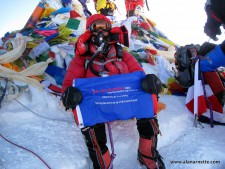 How many people have summited Everest?
How many people have summited Everest?
Statistics Updated through January 2024
The Himalayan Database reports that through January 2024, there have been 11,996 summits (5,899 members and 6,097 hired) on Everest by all routes by 6,664 different people. Those climbers who have summited multiple times include 1,571 members and 1,048 Sherpa, for 5,333 total summits. There have been 883 summits by women members.
Summits
The Nepal side is more popular, with 8,350 summits compared to 3,646 summits from the Tibet side. Only 1.9% or 224 climbers summited without supplemental oxygen. Only 35 climbers have traversed from one side to the other. Member summit success stands at 39%, with 5,899 who attempted to summit, making it out of 14,496 who tried. About 62% of all expeditions put at least one member on the summit. Few climbers from both Nepal and Tibet have summited, only 668. And even fewer, 155, have summited more than once in a single season. Almost only Sherpas, 78, have summited within seven days of their first summit that season. Kami Rita Sherpa (Thami) holds the record for most summits at 29 and Kenton Cool, UK, at 17 for a non-Sherpa. Seven Sherpa have 20 or more summits. Member climbers from the USA have the most country member summits at 906.
How Safe is Everest?
As for Everest deaths, 327 people (199 Westerners and 110 Sherpas) died from 1922 to January 2024. These deaths are about 2.7% of those who summited for a death rate of 1.11 of those who attempted to make the summit. Westerners die at a higher rate, 1.38, compared to hired at 0.87. Descending from the summit bid is deadly, with 92 deaths, or 28% of the total deaths. Female climbers have a lower death rate at 0.81 compared to 1.14 for male climbers, and 14 women have died on Everest.
The Nepal side has seen 217 deaths or 2.8%, a rate of 1.14. The Tibet side has experienced 110 deaths or 3%, a rate of 1.09. Climbers from the UK and Japan have the most all-time deaths at 17. Most bodies are still on the mountain, but China has removed many bodies from sight on their side. The top causes of death are avalanches (77), falls (75), altitude sickness (45), and exposure (26).
Everest is becoming safer even though more people are now climbing. From 1923 to 1999, 170 people died on Everest with 1,170 summits or 14.5%. But the deaths drastically declined from 2000 to 2023, with 10,826 summits and 157 deaths or 1.4%. However, four years skewed the death rates, with 17 in 2014, 14 in 2015, 11 in 2019, and the record 18 in 2023. The reduction in deaths is primarily because of significantly higher Sherpa support ratios, improved supplemental oxygen at higher flow rates (up to 8 lpm) gear, weather forecasting, and more people climbing with commercial operations.
Latest: Spring 2023
In 2023, there were 667 summits, including only 12 from Tibet, as it was closed to foreigners but 665 from Nepal, and all but 3 used supplemental oxygen. There were a record 18 deaths of Everest climbers. 57% of all attempts by members were successful. Of the total, 61 females summited.
Which side should I climb, north or south?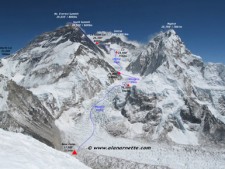
Both sides have a lot to offer: the Mallory and Irvine mystery in 1924 in Tibet and Nepal, with the first summit by Hillary and Norgay in 1953.
The comparison between sides is pretty simple. The north is colder, windier, and dustier; some feel technically harder since you climb on more exposed rock.
The south has the Khumbu Icefall, which some now fear. However, I believe the facts don’t support the fear. Through spring 2023, out of the 220 total deaths on the Nepal side, 46 occurred in the Icefall. By the way, virtually all of these deaths were Sherpas ferrying loads to camps in the Cwn and above.
- 22 – Avalanche (most from Everest West Shoulder from the hanging seracs)
- 18 – Icefall Collapse (Similar to what we saw in spring 23-023, taking three Sherpas)
- 5 – Fall/Crevase
- 1 – AMS
So, while these deaths, especially when they happen in great numbers like in 2014 and 2023, garner media attention, that’s not the real story being inexperienced clients with unqualified guides taking unnecessary chances regarding weather, climbing conditions (fresh snowfall- avalanches) and too little supplemental oxygen for a “normal” person, and not turning back when they get in trouble. All of these are avoidable.
Since 1953, there have been 11,996 summits of Everest through January 2024, on all routes, by 6,664 different people. Climbing from the Nepal side is the most popular side and has a higher death total and death rate with 8,350 summits with 217 deaths through January 2024 or 2.6%, a rate of 1.14. The Tibet side has seen 3,646 summits with 110 deaths through January 2024 or 3.0%, a rate of 1.09.
When choosing sides, remember that as of 2024, China does not allow helicopter rescues on its side. However, that might change as they are building a massive mountaineering center at the base camp to cater to tourists, and they have said they will start helicopter rescues as part of the center. This has been rumored for years, so I doubt we will see chopper rescues anytime soon.
One can cherry-pick the numbers to prove almost any point on which side is safe. The death rate in Nepal is 1.14, and in Tibet is 1.09. The bottom line is death happens on both sides of Everest, and it often comes down to being in the wrong place at the wrong time. A lot comes down to the experience you are seeking.
Should I Use Supplemental Oxygen?
It is rare to summit Everest without using supplemental oxygen; only 221 people ever have. Digging deep into the data reveals that of the 327 deaths, 178 were not using O’s when they perished, but this is a bit misleading because, for many of the deaths, 105 were doing route preparation, primarily by Sherpas. Most would not have used Os because they were low on the mountain. A case in point was the 2014 ice serac release and the 2015 earthquake that killed 31 people, and they were below Camp 1 and not using oxygen.
Looking at climbing in modern times, i.e., from 2000 to 2023, we can see that 88 members (not Sherpas) summited without supplemental oxygen, and 28 died, or 32%. This rate compares with the 4,832 members who summited with Os, and 60 died or 1.2%. In other words, you are 26 times more likely to die if you don’t use supplemental oxygen.
Supplemental oxygen gives the body a 3,000-foot advantage. In other words, when the climber is at 28,000 feet, the body feels like 25,000 feet. The main benefit of supplemental oxygen is that you feel warmer, thus allowing the heart to pump blood and oxygen to fingers and toes, thus reducing the risk of frostbite.
While climbing without Os is a serious accomplishment, it is not for everyone. Many try, and few succeed.
How Do I Pay for an Everest Climb?
Getting the money is almost always more challenging than climbing Everest. People become very creative when finding money. Some take out loans and refinance their home mortgage; others have the infamous “rich uncle.” Then some set up a website to sell t-shirts or ask for “donations” from strangers. Believe it or not, this works to raise some money but rarely enough to cover all the expenses.
But the most common way to fund an Everest climb is to make it a priority in your budget by setting money aside each month for as long as it takes. This approach is how I funded 26 of my big climbs since starting at age 38.
The question of obtaining a sponsor often comes up. Unfortunately, getting sponsored by a large outdoor gear or other company is extremely difficult. People have more success with large corporations like insurance or banks. There are ways to obtain a sponsor, but it takes years of work, a solid plan, and proven experience, and it often comes down to who you know and a lot of luck.
Climbing for a charity or a cause is popular, but be careful not to use your cause to fund a climb. In my opinion, asking for donations to pay for a climb is a poor practice.
You can read more about my own experiences with The 7 Summits Climb for Alzheimer’s: Memories are Everything and thoughts for sponsorship at this link.
What are my Chances?
Be wary of claims of 100% summit success. Recently, operators have calculated success by counting only those who left the High Camp for the summit. They don’t include anyone who paid to climb Everest with them, arrived at Base Camp and didn’t leave for their summit bid from the High Camp. In other words, they may have started with 20 people, had five drop out before the summit push, and another three give up before reaching the South Col, leaving 12 to go to the top. All ten made it, so they claim 100% when it’s 60%.
Historically, about 62% of all expeditions have put at least one member on the summit. In recent years, long-time western operators like Jagged Globe, Adventure Consultants, Furtenbach, Madison Mountaineering, and others regularly put almost every member on the summit.
Today, operators use the standard routes, so there are fewer unknowns. That, along with improved weather forecasting, extra supplemental oxygen, and generous Sherpa support, has made Everest one of the safest 8000-meter mountains and the most summited 8000er by a considerable margin.
Why Everest?
Let’s wrap up with why even climb Everest at all. It is trendy to criticize anyone who has climbed or is planning a climb. Jon Krakauer’s book Into Thin Air set a negative tone and profiled climbers as rich, inexperienced, and selfish after his one climb in 1996. In my experience with six climbs on Everest or Lhotse, the opposite is today’s reality.
To be fair, in recent years, the marketing of low-cost expeditions has attracted inexperienced climbers. This price move is all about supply and demand. All the puffery from the Nepal government about making Everest safer has had zero impact on this because all involved, government officials to guide companies to guides, benefit from the profit.
If you want to attempt the world’s highest peak, do the work:
- Get the proper experience, train your body to be in “Everest Shape,” and prepare your mind to push yourself harder than you ever thought possible.
- Earn the right to climb Everest; don’t just expect money to buy the right.
- Select a team that matches your experience; be smart, be humble, and savor every moment.
Preparing for Everest is More than Training
If you dream of climbing mountains but are not sure how to start or reach your next level, from a Colorado 14er to Rainier, Everest, or even K2, we can help. Summit Coach is a consulting service that helps aspiring climbers throughout the world achieve their goals through a personalized set of consulting services based on Alan Arnette’s 27 years of high-altitude mountain experience and 30 years as a business executive. Please see our prices and services on the Summit Coach website.
My Thoughts on Everest?
I summarized my thoughts in a post, “I want to climb Everest.”
Climbing Everest is not easy. It is not for beginners. It is not to be rushed. Climbing Everest is a privilege. It is a right that should be earned. When you fly into Kathmandu, you may see Everest out your window. It is at the same level as your airplane is flying. Let that sink in.
Climbing Everest is hard. It tests you in ways you never knew possible. You understand that several months after you get home – regardless of your result. So, yes, climbing Mount Everest, Chomolungma, Sagarmatha, or Peak XV is life-changing. Climb with confidence that you are prepared, knowledgeable, and with a clear sense of purpose.
If you summit, it will change your life. If you attempt it, it will change your life. But no matter the results, the experience is what you take away – not the summit. Research, train, prepare, and climb with confidence. The reward is worth the pain. The summit is worth the cost.
Climbing Everest can change your life.
Climb On!
Alan
Memories are Everything
Everest Pictures and Video
© All images owned and copyrighted by Alan Arnette unless noted. Unauthorized use and reproduction are strictly prohibited without specific permission.
A tour of Everest Base Camp 2016
Alan Arnette is the oldest American to summit K2 in 2014 and has six expeditions on Everest or Lhotse, with a summit of Everest in 2011. He climbs to raise money and awareness of Alzheimer’s disease.
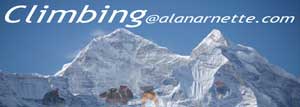
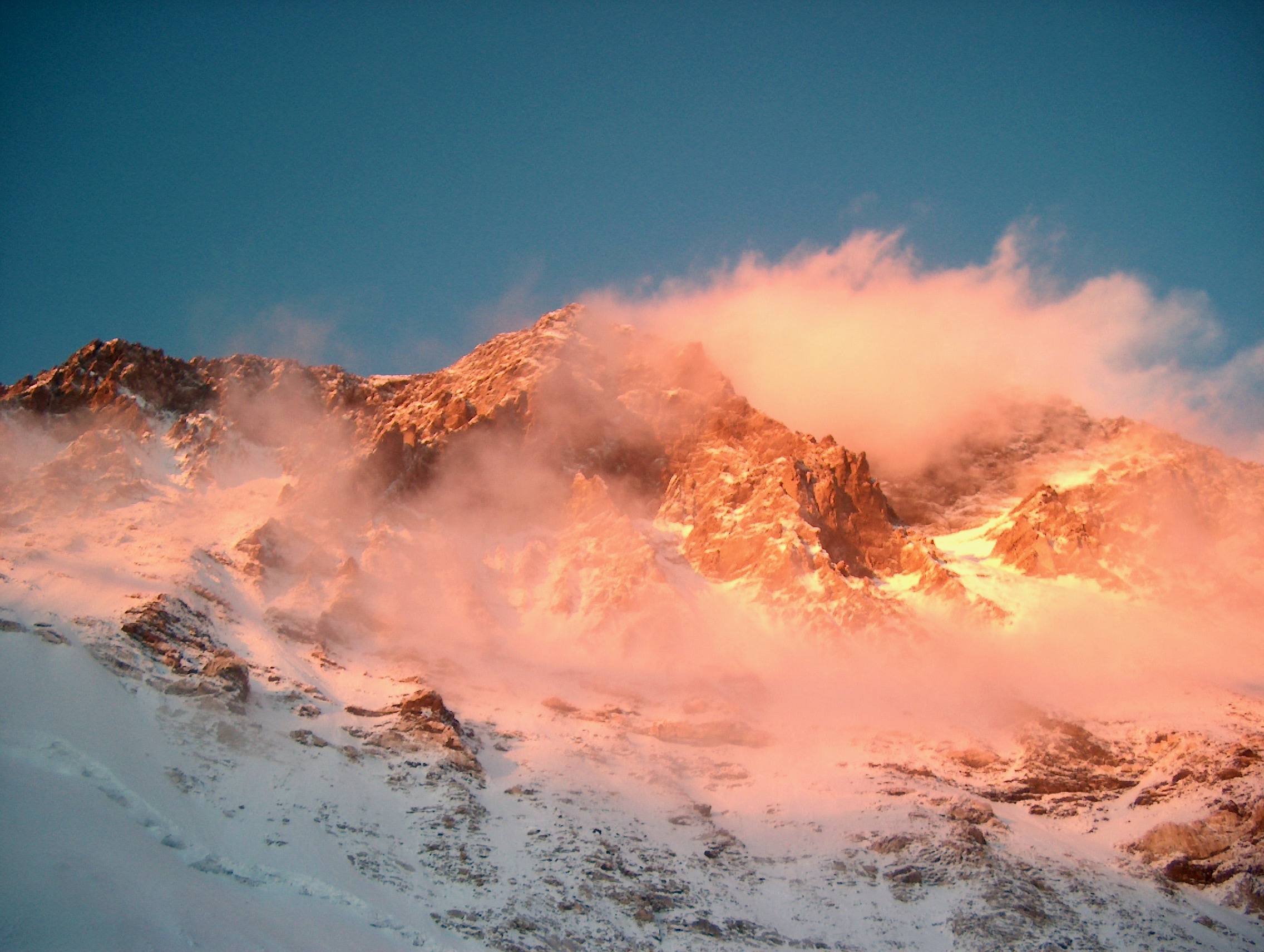


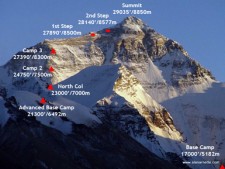
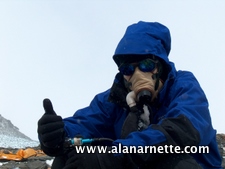
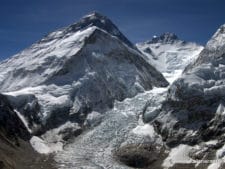
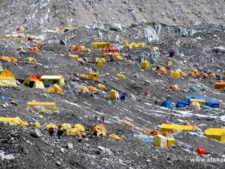
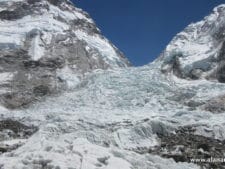
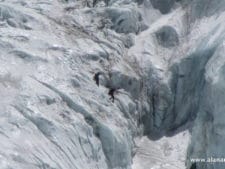
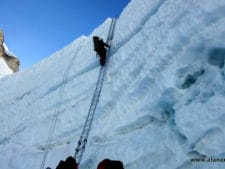
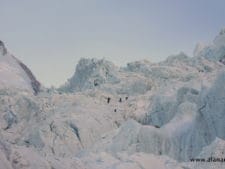
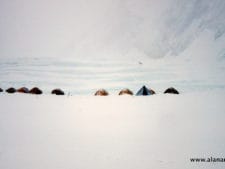
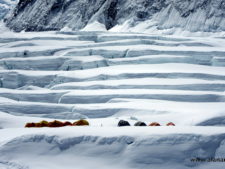
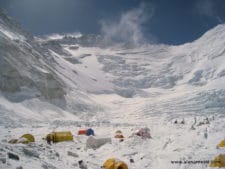
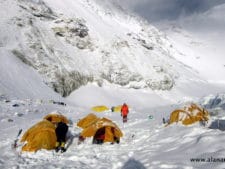
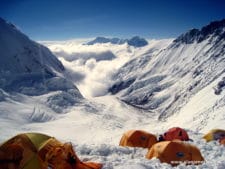
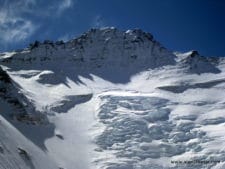
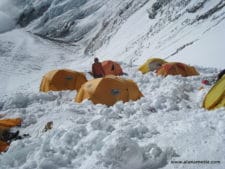
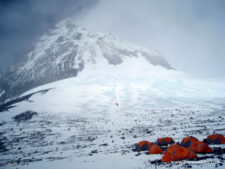
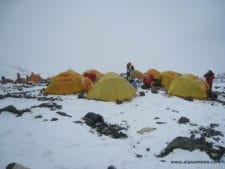
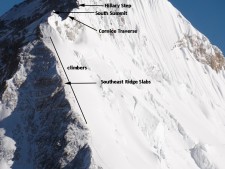
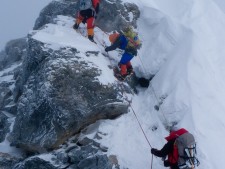
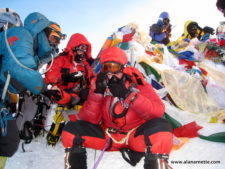
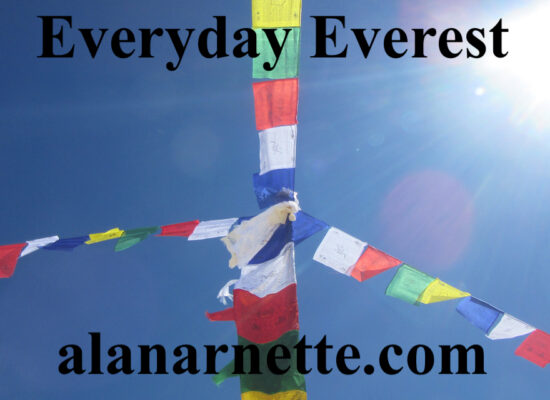
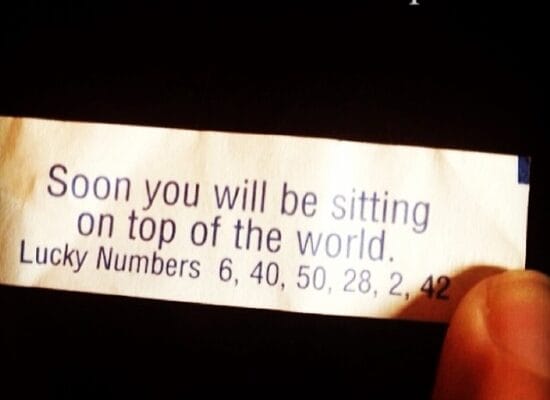
2 thoughts on “How Much Does it Cost to Climb Mount Everest? – 2024 Edition”
Thanks for this excellent article. I have enjoyed your website for years and especially like your podcasts. I’ve trekked in Nepal multiple times but I admire those who make the summit attempt
Hey Mitch, appreciate your comment.
Comments are closed.